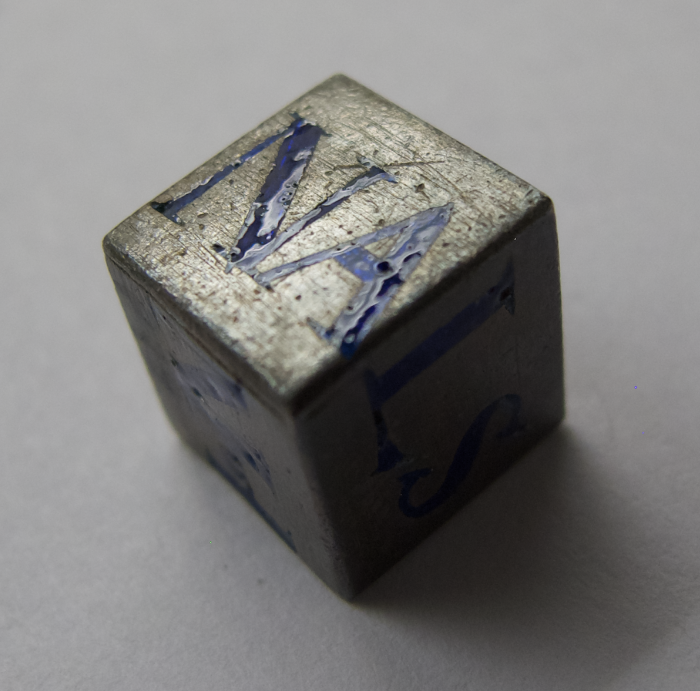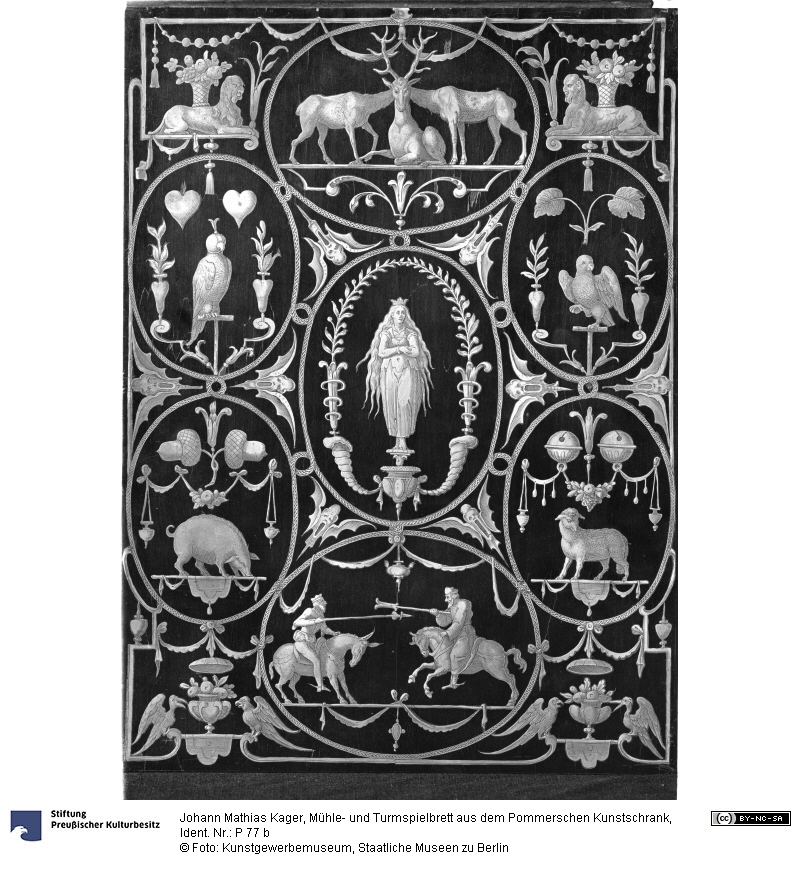Re: Abridged summary of bgs4ever@googlegroups.com - 1 update in 1 topic
Richard Ballam
On 1 Sep 2020, at 14:49, "bgs4...@googlegroups.com" <bgs4...@googlegroups.com> wrote:
- Games with Put & Take - 1 Update
Jonas Richter <jric...@gwdg.de>: Aug 31 07:17PM +0200
Hi everyone,
spinning off of the recent discussion about owl games I'm curious about
the history of the basic "put & take" element, that is: a central pot/
bank, and some mechanic (usually a ...more
You received this digest because you're subscribed to updates for this group. You can change your settings on the group membership page.
To unsubscribe from this group and stop receiving emails from it send an email to bgs4ever+u...@googlegroups.com.
Tibaldini Marco (Student Edu18)
Il giorno 2 set 2020, alle ore 10:04, Richard Ballam <buryb...@msn.com> ha scritto:
You received this message because you are subscribed to the Google Groups "bgs4ever" group.
To unsubscribe from this group and stop receiving emails from it, send an email to bgs4ever+u...@googlegroups.com.
To view this discussion on the web visit https://groups.google.com/d/msgid/bgs4ever/DB7PR10MB220127CAD59B8E1E1D4C9AC9D62F0%40DB7PR10MB2201.EURPRD10.PROD.OUTLOOK.COM.
Malcolm J Watkins
I would be interested
to know what those references are. Strutt appears to suggest
that the dreidl form of teetotum ('T-totum') is only 4-sided
and perhaps a spin-off (pun intended) from spinning tops. Even
the name seems to reflect the game ('totum' - 'all').
The Oxford English Dictionary's earliest reference is to an example in ivory from Daniel Defoe in 1720. I suspect the 6-sided form came about (or was perhaps resurrected) because of the duties on dice: buy a die, pay tax; use a teetotum, no tax.
Malcolm
--
Jonas Richter
Marco, if you dig up those references, please share them on the
list! I'm interested, too. :)
Richard, I only know of attempts to interpret the d26 made from
Zöblitz serpentine (19th-20th cent.) as Roman artifacts; this has
been defuted:
Borhy, L., 2003: Berichtigung zu CIL II, suppl. 6246, 8: Ein weiterer “seltsamer Spielwürfel” aus Barcelona. Faventia 25/2, 2003, 173-177. http://ddd.uab.cat/record/682
More on these dice: https://rpggeek.com/geeklist/186618/item/3714503#item3714503
Cheers
Jonas
Malcolm J Watkins
Wow! Thanks Jonas. Some really-thought-provoking stuff.
Malcolm
--
You received this message because you are subscribed to the Google Groups "bgs4ever" group.
To unsubscribe from this group and stop receiving emails from it, send an email to bgs4ever+u...@googlegroups.com.
To view this discussion on the web visit https://groups.google.com/d/msgid/bgs4ever/73b14d3e-713c-10aa-3909-6e75fa35d2de%40gwdg.de.
u.sch...@museedujeu.ch
We are about to publish an entire volume of BGSJ to misconceptions in the history of games. In my part, I discuss the false identification as “Roman” of the famous dice from Zöblitz (still forwarded by Fittà in 1996) somewhat in detail.
It was clear already in 1877!
Cheers
Ulrich
De : bgs4...@googlegroups.com <bgs4...@googlegroups.com> De la part de Malcolm J Watkins
Envoyé : mercredi 2 septembre 2020 18:56
À : bgs4...@googlegroups.com
Objet : Re: Roman Put & Take/ tee-totum (or rather Zöblitz d26)
To view this discussion on the web visit https://groups.google.com/d/msgid/bgs4ever/9525d061-471b-3b7f-6962-e3e0027cd119%40heritagematters.co.uk.
Jakob Gloger
Von: u.sch...@museedujeu.ch
An: bgs4...@googlegroups.com
Betreff: RE: Roman Put & Take/ tee-totum (or rather Zöblitz d26)
Malcolm J Watkins
How strange.
Just posted on a Facebook page using the iffy dating of dominoes before the post-medieval period as an example of received wisdom.
SOunds interesting. Will hope I see and can obtain a copy in due course.
Malcolm
To view this discussion on the web visit https://groups.google.com/d/msgid/bgs4ever/009601d681c1%248795eff0%2496c1cfd0%24%40museedujeu.ch.
Stela maris Ferrarese
anno...@gmail.com


Jonas Richter
I've tried to collect all your input into a single document, sorted
chronologically: https://hcommons.org/docs/put-take/ Other HCommons
users can edit the document, similar to a Wikipedia page. If you don't
want to create an account but have improvements, please let me know.
HCommons = Humanities Commons is an academic research network. Apart
from the option to create free personal profiles, the site incorporates
a research repository, discussion groups and some other features. I've
created a group for the "History of Games and Play". So far I'm the only
member. ;)
What I like about HCommons is the fact that, unlike academia.edu or
researchgate.net, it is not a commercial, for-profit site. No ads, no
features hidden behind paywalls.
Jonas
ofatihparlak
Jonas Richter
Some further findings (I'll also update them into the HCommons
doc soon), on spinning dice (with numbers, not put & take
markings) on the one hand, and on put & take dice on the
other, both from German sources:
1) Here’s an archaeological paper mentioning a spinning die (Kreiselwürfel) found in a cesspit in Höxter (North Rhine-Westphalia). The cesspit is dated to the 14th to 1st half of the 15th cent. The die is made from bone, a hexagonal prism with a spindle, its faces showing 1-6 pips. König, the author of the paper, writes:
Der Fund stellt einen frühen Beleg dieser seit dem 16. Jahrhundert beliebten Spielwürfelvariante dar. (The object is an early example of this dice variant which was popular since the 16th century. – transl. JR)
Andreas König: Hinterhöfe der Macht – Ausgrabungen am romanischen Brückenmarkt in Höxter. ARCHÄOLOGIE IN WESTFALEN-LIPPE 2017 (2018), 90-94, here p. 92 (quote) and 93 (image). DOI: https://doi.org/10.11588/aiw.0.0.68917
2) Johannes Bolte points to a text from 1671 in which a put & take die is described: Chr. Scriver: Gottholds zufällige Andachten, 1671, a collection of devotional, edifying texts. One of them takes its point of departure from a children's toy referred to as "Spielhölzlein", possibly a stick die. The four markings are said to be Omnia, Nihil, Pone, Trahe.
Johannes Bolte: Zeugnisse zur Geschichte unserer Kinderspiele. Zeitschrift
des Vereins für Volkskunde 19 (1909), pp. 381-414, here
p. 403.
Ibd.: Weitere Zeugnisse zur Geschichte unserer Kinderspiele. Zeitschrift
des Vereins für Volkskunde 33/34 (1923/1924), pp. 85-95, here
p. 93.
Christian Scriver: Gottholds Zufälliger Andachten Vier Hundert. Leipzig 1671 (not the first editon). Das dritte Hundert, p. 85 (Google Books). The text saw many reprints over the decades.
Cheers,
Jonas
Tibaldini Marco (Student Edu18)
Concerning the die of Emporion, has been found on site, apparently in one of the Roman layers (the city was founded as Greek colony and then romanized). Unfortunately the stratigraphy of the site appear as ‘disturbed’ in many zones and this brought to many misinterpretations and misinformation about it. The stores of the archaeological site are full of material, which, after a quick look, contains gaming material that passed unnoticed.





Il giorno 8 set 2020, alle ore 20:18, Jonas Richter <jric...@gwdg.de> ha scritto:
You received this message because you are subscribed to the Google Groups "bgs4ever" group.
To unsubscribe from this group and stop receiving emails from it, send an email to bgs4ever+u...@googlegroups.com.
